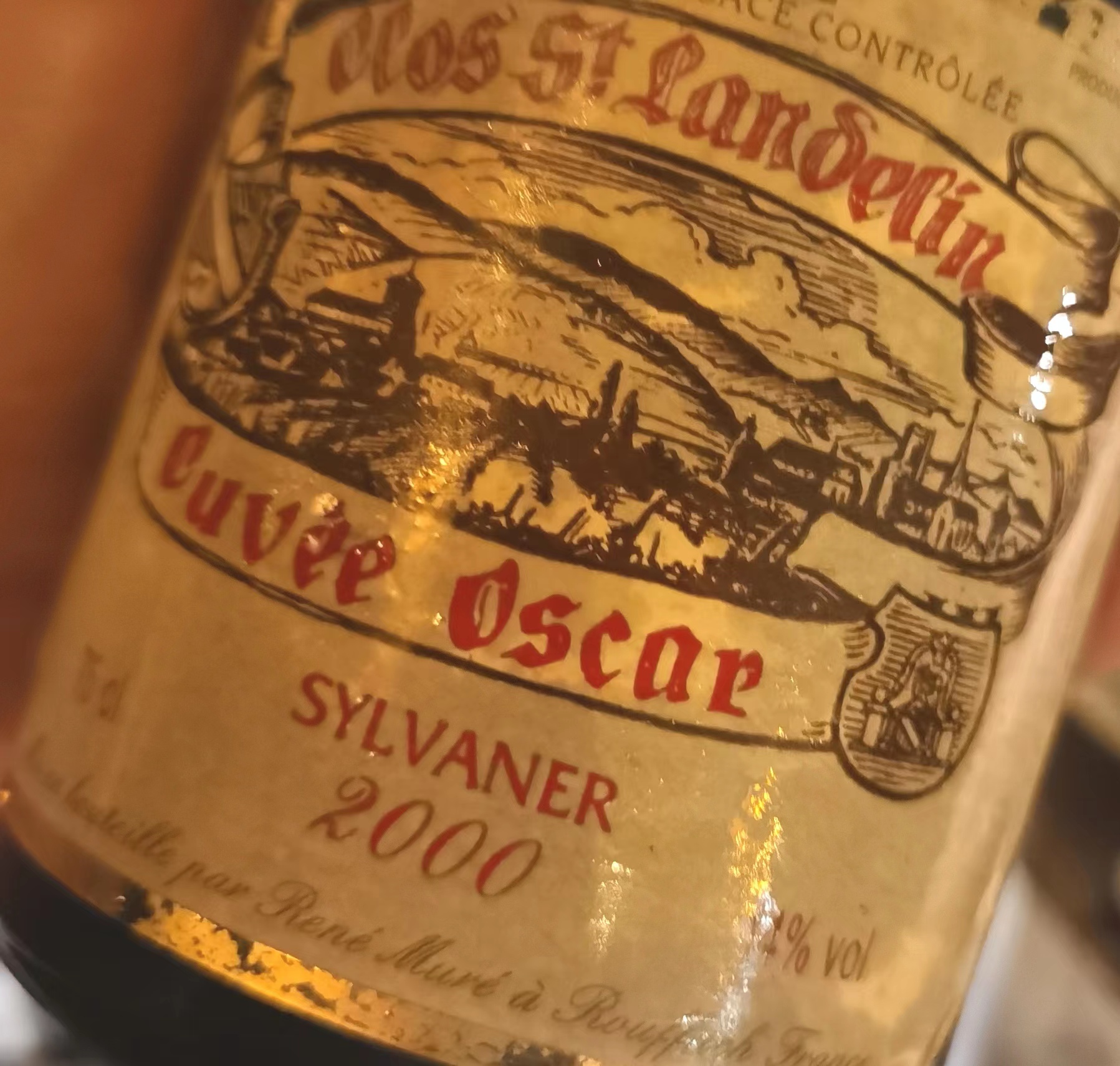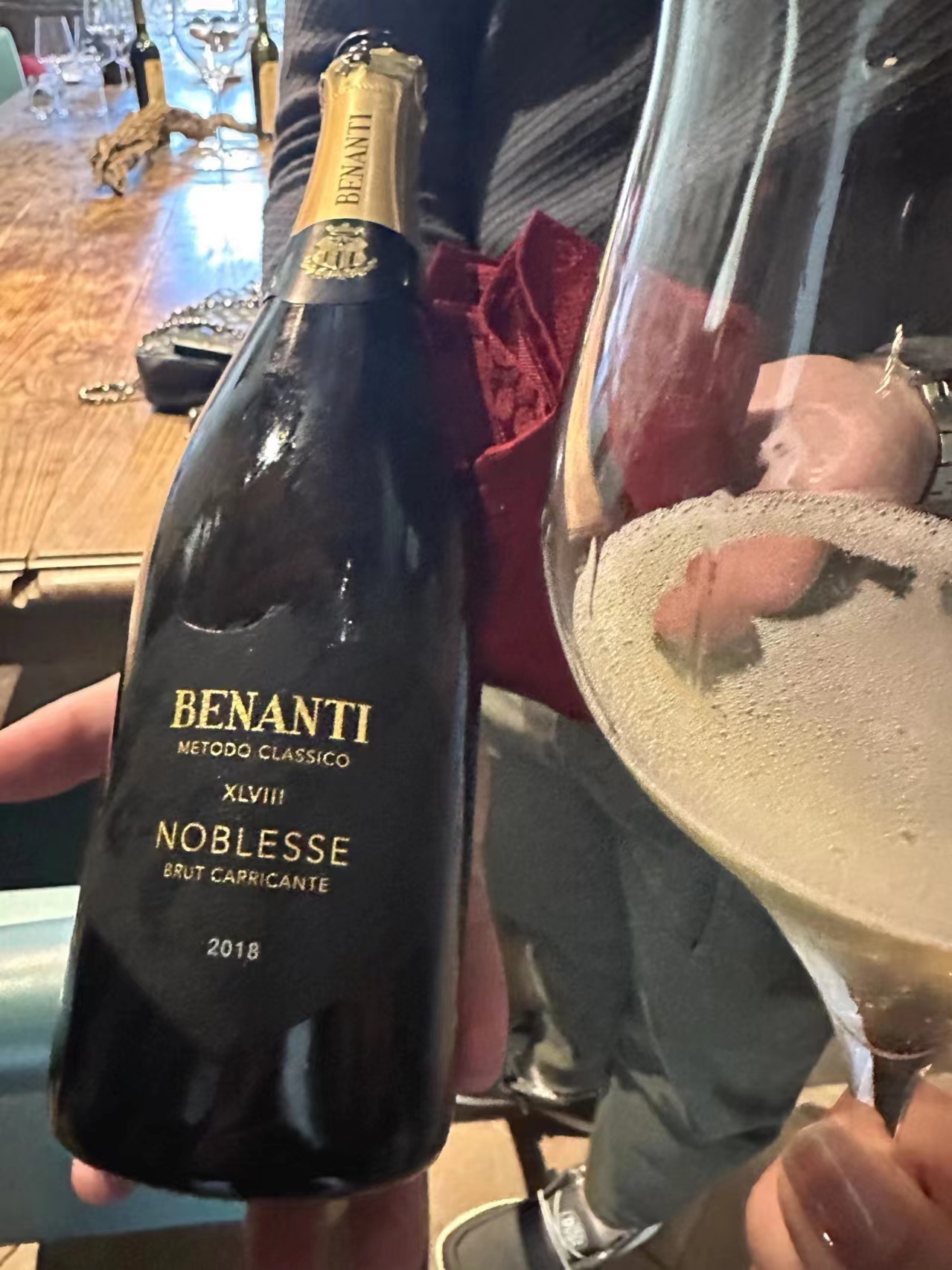Muré 2000 Sylvaner Cuvée Oscar Clos Saint Landelin Alsace 95

There are fewer better Sylvaners wines made anywhere in the word than Muré’s iconic Cuvée Oscar bottling. Named after Oscar, the grandfather of Véronique et Thomas, the current generation of Muré siblings running the estate, it is a landmark Sylvaner wine that emblematically showcases just how great the wines made with this variety can be. That is, if and when certain conditions are met. The Sylvaner grapes used to make the Cuvée Oscar grow in two small and very old plots planted in an Alsace grand cru, the Vorbourg, specifically located in that part of the cru that is a Muré monopole, the famous Clos Saint Landelin. The combination of these very old Sylvaner vines (the average age of the Sylvaner vines used to make the Cuvée Oscar is 55 years, but many are more than seventy years old), low yields, relatively steep hillside vineyard (the Sylvaner is planted in the southeast corner of the Clos Saint Landelin), the Vorbourg’s iron- and mineral-rich soil, and the grapes being harvested relatively late in the season lead to a Sylvaner of uncommon richness and complexity. It is also a relatively sweet and luscious wine, so those looking for bone-dry white wines might need to look elsewhere for their Sylvaner fun: but whether one likes white wines that have some residual sweetness or not, the simple fact of the matter is that all anyone who enjoys wine will need to understand immediately just how great this wine is in almost all vintages is one sip of it. That’s how impressive and memorable it is. And despite its richness and sweetness, the Sylvaner Cuvée Oscar matches remarkably well with a bevy of different foods. Clearly, the Cuvée Oscar, with its honeyed notes and luscious texture is not what you’d be looking to pair with a delicate sole meunière or with fried calamari, but many other foods and dishes such as asparagus, oysters, fresh or lightly cooked shrimp, salmon or halibut steaks with citrus chutneys and/or soy sauce inclusions (think Pacific Rim cuisine), and rich white meat preparations (for example, with mushrooms) will usually find no better match than this wine.
Still today, at twenty-four years of age, the Muré 2000 Sylvaner Cuvée Oscar Clos Saint Landelin Alsace is a gem. Bright golden yellow. Very deep and intense aromas of ripe white and yellow peach, lime, marzipan, crystallized apricot and balsamic oils, all enlivened by marmelady botrytis and a hint of passerillage (air-dried grapes).The wine is luscious and layered, with suave , very rich and ripe flavours of orchard and tropical fruit bathed in a thick coat of honey. The finish is suave, velvety and extremely long. I have had Murè’s 2000 Sylvaner numerous times now over the last six years or so, and it’s beautiful each and every time. No sign of it fading anytime soon, in other words. If anything, this specific bottle was even better than some others I have had. Really, just gorgeous stuff. You can read more about this wine in a vertical I dedicated to it going back to 1975 here in the TerroirSense Wine Review (July 6, 2022: Vertical: Muré Sylvaner Cuvée Oscar 1975-2019).
Benanti 2018 Carricante Metodo Classico Brut XLVIII Noblesse Terre Siciliane 93

Golden-tinged medium dark straw yellow with strong rising medium-small bubbles. Rich, deep aromas and flavours of yellow flowers (broom), orange marmalade, beeswax, and herbs, complicated by a strong note of candied ginger. Tactile and quite textured in the mouth, but with enough of Carricante’s tell-tale acid spine to keep this mouthcoating bubbly fresh and lively. The aftertaste is long and savoury, hinting at saline volcanic minerality amidst the strong presence of dry herb notes. Stainless steel-fermented, the wine stays on the lees for about twenty-four months. A very good sparkler indeed; it’s also a very rare one, given that Carricante Metodo Classico wines are not (yet?) common coin on Etna. It might not be easy to find this specific vintage, given that only 800 bottles were made at the time, but production has since increased so you just might be able to find the almost as good 2020 in your friendly neighbourhood wine store. Drinking window: 2024-2028.
Even I wasn’t aware Benanti was making a sparkling wine when I first tasted this 2018 for the first time now some years ago; until the evening I ran into it at an eatery on Etna: and that was after I had just visited the winery a few days earlier (and have been doing so for decades). Really, one never stops learning in life. Clearly, the fact the winery started out by making only 800 bottles of this sparkling wine a year explains why it might not be on too many people’s radars just yet, but that is bound to change soon as production of this Metodo Classico bubbly (made by secondary fermentation in the bottle in the manner of Champagne) is destined to increase in the years to come. Benanti chooses the Carricante grapes growing at some of the highest altitudes (700-850 metres asl) and most luminous positions on the Eastern and Southern slopes of Etna, although grape source will vary from year to year.

 中文
中文



